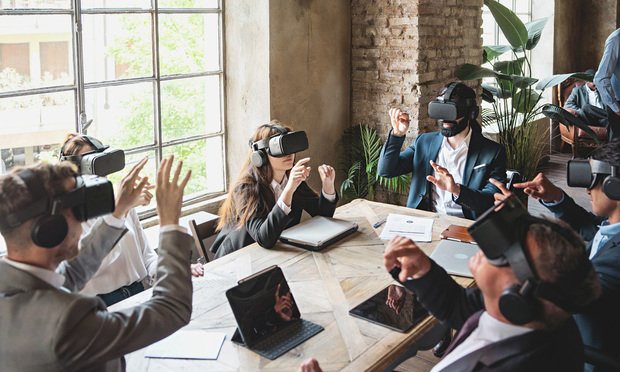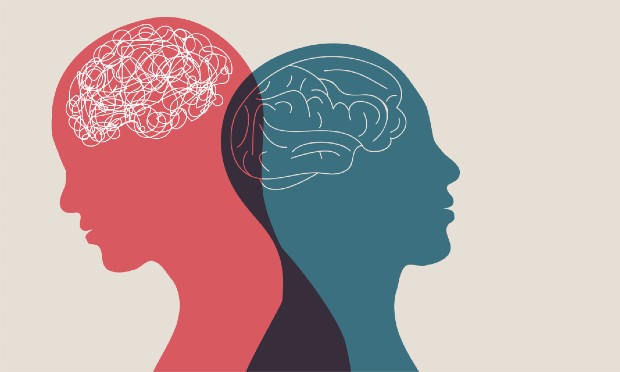 Credit: G. Lombardo/Adobe Stock
Credit: G. Lombardo/Adobe Stock
Recent trends show that virtual meeting platforms are harming DEI efforts. In fact, women and minority-group men often feel shut out in meetings. Communities of color and women are disproportionately more affected by possible microaggressions that may appear in a virtual work environment.
Joseph Toma, CEO of Jugo, a virtual meeting and event platform experience, believes companies can do more to make their online space more inclusive and have ALL employees be heard.
Recommended For You
How are virtual meeting platforms harming DEI efforts/hindering minority groups?
Virtual meeting platforms that don't put human-centric design front and center are glorified calling tools. The problem is that we've gotten used to platforms that don't support how we naturally communicate; the limitations certainly have harmed DEI efforts regarding how minority groups are seen and heard in virtual meetings.
We've gotten too comfy with platforms that don't support our natural way of chatting.
Research tells us that around 55% of how we communicate is through non-verbal cues. That's the good stuff, like body language and facial expressions. And what gets lost in translation on your everyday, run-of-the-mill virtual meeting platforms? You got it, all those essential non-verbal cues.
Which groups are most affected, and how so?
We can start with the impact on DEI efforts and minority groups. It's not just about being seen; it's about being heard, too. Studies like the one from Catalyst show us that micro-aggressions and little instances of implicit bias are more likely to slip under the radar in virtual settings. This impacts all women, but especially women of color. They're interrupted or ignored more often because physical presence nuances get sidelined in the virtual world.
It doesn't stop there. Gartner's global study showed us that employees with disabilities are also affected. They're 44% less likely to feel that sense of belonging at work, and that feeling gets ramped up in virtual spaces. And the kicker? Only 13% of organizations have taken action to ensure their digital work environments are inclusive.
We're not done. Non-native speakers deal with misunderstandings because of language nuances and a severe lack of those all-important non-verbal cues. Research from the University of Southern California tells us that more than half of non-native English speakers feel they've been treated unfairly because of language issues.
We've got to do better. Virtual meeting platforms need to start putting people first – that's where human-centric design comes in. By focusing on how we naturally communicate and interact, we can create spaces that aren't just inclusive but let everyone be seen and heard. After all, that's what communication is all about, right?
How can those with disabilities also be limited?
When discussing disabilities, the limitations can be as varied as the individuals themselves. Individuals with hearing impairments, for example, rely heavily on visual cues. In a traditional face-to-face conversation, they might read lips or catch the nuances of body language. However, with your typical virtual platforms, the video quality might be poor or the screens too small, making it incredibly hard for them to catch these cues.
Individuals with mobility challenges might find it difficult to be seen as who they are in a virtual setting.
A study in the Journal of Business and Technical Communication found that when folks with disabilities can fully participate in meetings, their overall job satisfaction and productivity shoot up. But for that to happen, we need to ensure that virtual platforms are thoughtfully designed to be fully accessible and inclusive.
We need virtual meeting platforms that go beyond offering basic features for communication and cater to the diverse ways humans interact. Non-verbal cues, accessibility features, and user-friendly interfaces should all be standard, not special features. When we reach that point, we can say that we see and recognize everyone in the room.
How can HR departments look out for signs that this is occurring?
- Participation: Who's contributing during meetings or discussions? If some people stay quiet all the time, it might be a sign they don't feel included or comfortable.
- Feedback: Are there folks consistently giving neutral or negative feedback? Look for commentary about feeling overlooked, an inability to participate fully, or struggling with the technology.
- Performance metrics: During onboarding and training, if someone's performance or progress seems to lag, it could be a sign they're not getting the support they need.
- Turnover rates: High turnover rates, especially among certain groups, could signal a lack of inclusivity or support.
- Observation: HR representatives can occasionally attend meetings or training sessions to observe the dynamics and interactions.
How can HR teams implement tools or technology to combat this?
- Mixed reality for onboarding & training: Imagine new hires getting a virtual tour of their workplace, even if they're miles away, or training sessions where you share experiences in the same space. With mixed reality, you can create engaging and immersive experiences that level up your onboarding and training game.
- 3D environments for virtual meetings: Ever felt like a virtual meeting was just a wall of talking heads? Not the most inspiring experience. But what if you could meet in a 3D conference room with spatial audio so it feels like you're all in the same room? It makes virtual meetings more natural and interactive and helps bring back some of the non-verbal cues we miss in 2D platforms.
- Human-centric design: This is all about designing tech built around how we naturally communicate and interact. It means creating intuitive platforms that cater to various needs and abilities and replicate the richness of face-to-face communication as closely as possible. It can be as simple as ensuring your platform has a clean, easy-to-navigate interface or as complex as using AI to provide real-time translation for non-native speakers.
- Data analytics: With the right tools, HR teams can gather data on participation, engagement, and collaboration in virtual meetings. This helps identify patterns, highlight potential issues, and even measure the impact of interventions.
Related: Virtual-first plans offer employers a unique way to improve access to care
- Accessible design: Tech tools should be user-friendly and accessible to individuals with disabilities. This means compatibility with screen readers, offering subtitles or transcriptions, and ensuring navigability for those with mobility issues.
All these tools and technologies have a common goal: creating an inclusive and equitable environment that allows everyone to bring their best selves to work, no matter where they're logging in from. It's not just about keeping up with the times; it's about shaping a future of work that's better for everyone.







